Related Research Articles
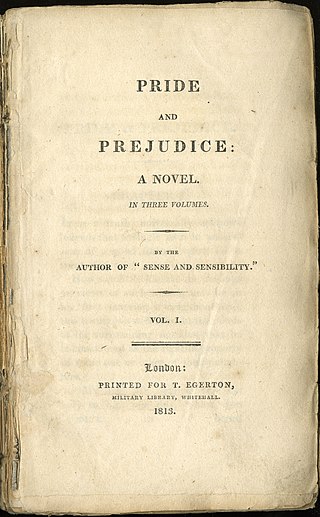
Pride and Prejudice is the second novel by English author Jane Austen, published in 1813. A novel of manners, it follows the character development of Elizabeth Bennet, the protagonist of the book, who learns about the repercussions of hasty judgments and comes to appreciate the difference between superficial goodness and actual goodness.

Sense and Sensibility is the first novel by the English author Jane Austen, published in 1811. It was published anonymously; By A Lady appears on the title page where the author's name might have been. It tells the story of the Dashwood sisters, Elinor and Marianne as they come of age. They have an older half-brother, John, and a younger sister, Margaret.

Persuasion is the last novel completed by the English author Jane Austen. It was published on 20 December 1817, along with Northanger Abbey, six months after her death, although the title page is dated 1818.

Elizabeth von Arnim, born Mary Annette Beauchamp, was an English novelist. Born in Australia, she married a German aristocrat, and her earliest works are set in Germany. Her first marriage made her Countess von Arnim-Schlagenthin and her second Elizabeth Russell, Countess Russell. After her first husband's death, she had a three-year affair with the writer H. G. Wells, then later married Frank Russell, elder brother of the Nobel prize-winner and philosopher Bertrand Russell. She was a cousin of the New Zealand-born writer Katherine Mansfield. Though known in early life as May, her first book introduced her to readers as Elizabeth, which she eventually became to friends and finally to family. Her writings are ascribed to Elizabeth von Arnim. She used the pseudonym Alice Cholmondeley for only one novel, Christine, published in 1917.

Bettina von Arnim, born Elisabeth Catharina Ludovica Magdalena Brentano, was a German writer and novelist.

Pride and Prejudice is a six-episode 1995 British television drama, adapted by Andrew Davies from Jane Austen's 1813 novel of the same name. Jennifer Ehle and Colin Firth starred as Elizabeth Bennet and Fitzwilliam Darcy, respectively. Produced by Sue Birtwistle and directed by Simon Langton, the serial was a BBC production with additional funding from the American A&E Network. BBC1 originally broadcast the 55-minute episodes from 24 September to 29 October 1995. The A&E Network aired the series in double episodes on three consecutive nights beginning 14 January 1996.

Simplicius is an operetta by Johann Strauss II. It was conceived from the work of HJC von Grimmelhausen titled Der abenteuerliche Simplicissimus or simply Adventurous Simplicissimus, which was opined by many to be the 17th century's greatest German novel. The libretto for this work was furnished by Victor Léon who was one of Vienna's promising talents of that era.
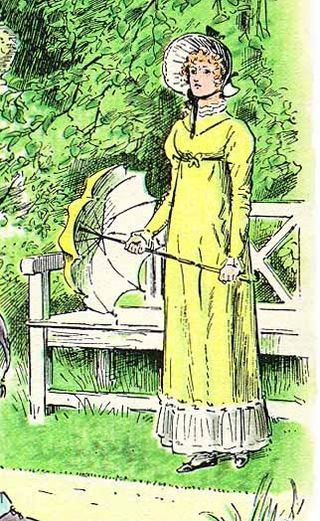
Elizabeth Bennet is the protagonist in the 1813 novel Pride and Prejudice by Jane Austen. She is often referred to as Eliza or Lizzy by her friends and family. Elizabeth is the second child in a family of five daughters. Though the circumstances of the time and environment push her to seek a marriage of convenience for economic security, Elizabeth wishes to marry for love.

The Watsons is an abandoned novel by Jane Austen, probably begun about 1803. There have been a number of arguments advanced as to why she did not complete it, and other authors have since attempted the task. A continuation by Austen's niece was published in 1850. The manuscript fragment itself was published in 1871. Further completions and adaptations of the story have continued to the present day.

Elinor Dashwood is a fictional character and the protagonist of Jane Austen's 1811 novel Sense and Sensibility.

Mr. Darcy's Daughters is a 2003 novel by the English author Elizabeth Aston, published by Simon & Schuster in the United States. Set in 1818, Mr. Darcy's Daughters is written as a sequel to Jane Austen's 1813 novel Pride and Prejudice. It features the five daughters of Fitzwilliam Darcy and Elizabeth Bennet – aged 21 to 16 – as they navigate London society in the absence of their parents, who have embarked on a diplomatic post to Constantinople. In London, the sisters meet new friends and find themselves in various romantic entanglements, all while learning what is acceptable behaviour among the city's elite.
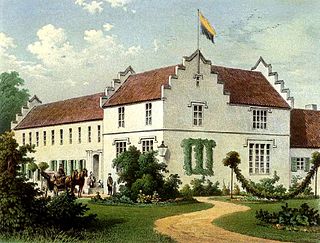
Elizabeth and Her German Garden is a novel by the Australian-born writer Elizabeth von Arnim, first published in 1898. It was very popular and frequently reprinted during the early years of the 20th century.

Belinda is an 1801 novel by the Anglo-Irish writer Maria Edgeworth. It was first published in three volumes by Joseph Johnson of London. The novel was Edgeworth's second published, and was considered controversial in its day for its depiction of an interracial marriage. It was reprinted by Pandora Press in 1986.

Lost in Austen is a four-part 2008 British television series for the ITV network, written by Guy Andrews as a fantasy adaptation of the 1813 novel Pride and Prejudice by Jane Austen. Amanda, a young woman living in modern London, enters the plot of the novel through a portal in her bathroom, to join the Bennet family and affect events, generally disastrously.

Rzędziny is a village in the administrative district of Gmina Dobra, within Police County, West Pomeranian Voivodeship, in north-western Poland, close to the German border. It lies approximately 6 kilometres (4 mi) north-west of Dobra, 16 km (10 mi) west of Police, and 21 km (13 mi) north-west of the regional capital Szczecin.

The Enchanted April is a 1922 novel by British writer Elizabeth von Arnim. The work was inspired by a month-long holiday to the Italian Riviera, and was probably the most widely read of her novels.

The Passionate Friends is a 1913 coming of age novel by H. G. Wells detailing the life and travels of a young man. It is notable as the first introduction of Wells's notion of an "open conspiracy" of individuals to achieve a world state.

The Bennet family is a fictional family created by the English novelist Jane Austen in her 1813 novel Pride and Prejudice. The family consists of Mr and Mrs Bennet and their five daughters: Jane, Mary, Catherine, Lydia, and Elizabeth, who is the novel's protagonist.
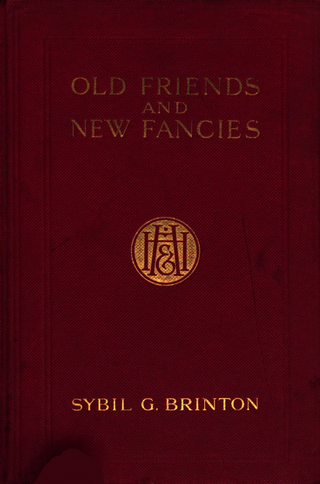
Old Friends and New Fancies: An Imaginary Sequel to the Novels of Jane Austen (1913) is a novel by Sybil G. Brinton that is often acknowledged to be the first sequel to the works of Jane Austen and as such is possibly the first piece of published Austen fan fiction, although earlier examples have been described by Sarah Glosson. It incorporates characters from each of Austen's six major novels into one unified story, alongside characters of Brinton's own invention. Keeping to the spirit of the source novels, its major theme is the difficulties faced by assorted pairs of lovers placed within the class structure of early 19th century Britain.
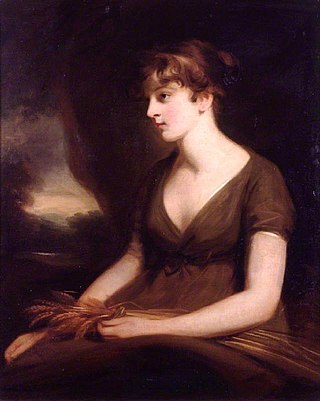
Frances Talbot, Countess of Morley was an English author and illustrator, best known as a correspondent of Jane Austen. By her marriage to John Parker, 1st Earl of Morley, she became the Countess of Morley.
References
- ↑ "Vera".
- ↑ Römhild, Juliane (2014). Femininity and Authorship in the Novels of Elizabeth von Arnim: At Her Most Radiant Moment. Rowman & Littlefield. p. 116. ISBN 9781611477047 . Retrieved 9 September 2018.
- ↑ Römhild, p. 13